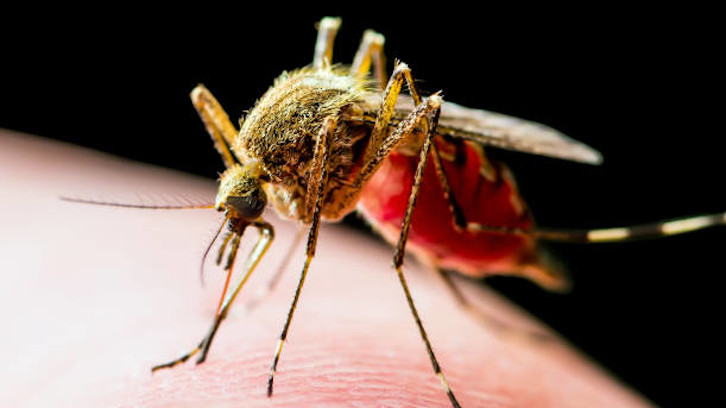West Nile Fever in Spain: challenges and control strategies

The West Nile Fever (WNF), a zoonotic disease caused by West Nile Virus, has increased in Spain during the last years: the number of cases has quadrupled from 2022 to 2023. Researchers from the UAB take part in the innovative project EquiFNO, which addresses this reemerging disease that is a risk to human and animal health.
The West Nile Fever (WNF) is a zoonotic disease caused by the West Nile Virus (WNV), from the Flaviviridae family. The virus follows a natural cycle between birds (main reservoirs and amplifiers) and mosquitos, particularly from the Culex genus, which act as vectors; while mammals, such as equids and humans, act as dead-end hosts. Most of the infected mammals are asymptomatic, but around 10% of affected horses develop encephalomyelitis with severe neurological signs. In humans, around 1% of infected individuals present neurological, gastrointestinal and renal affection. In addition to the severity of clinical presentations, infections cause high economic losses due to the treatment of patients and the surveillance and control programmes.
The WNF has been considered endemic in Spain since 2003, with sporadic outbreaks among equines and humans. As a consequence of its low morbidity rates, it is probably underdiagnosed. However, in 2020, 139 outbreaks among equids and 77 human cases were declared in Spain, which was one of the most affected countries that year. Since then, the number of reported cases in Spain has been lower, but it shows a clear increasing trend in equids and humans, in which the number of cases in 2023, even before finalizing the transmission season, had already quadrupled the 2022 cases.
Figure 1: Animal outbreaks (equids and birds) and human cases of WNF in Spain during 2020-2023 period. Developed by the authors on the basis of data from ECDC and RASVE (2023).
The transmission pattern of WNV is seasonal, with the first cases appearing in summer and lasting until autumn, with little variations according to local climate. In Spain, the higher number of cases in humans and equids are usually reported between weeks number 32 (beginning of August) and 41 (beginning of October), which are the periods of highest risk.
Figure 2: Animal outbreaks (equids and birds) and human cases along weeks during the 2020-2023 period. Developed by the authors on the basis of data from ECDC and RASVE (2023).
As equids are more susceptible to the disease than humans, they are geographically spread between human populations and are more exposed to the vectors; they are used as subjects for passive surveillance: the notification of clinical cases in horses is used as a predictor of possible human infections; in addition to active surveillance in areas of high risk.
Nonetheless, equid outbreaks do not always precede human infections. In 2022, the first human cases in Spain were notified before the first horse cases. This limitation of passive surveillance is caused, partially, by the low incidence of clinical signs in infected horses (10%), the difficulty in detecting mild neurological signs, and limitations in confirming infections by serology (because of interactions with other flavivirus and interference of vaccine immunity) or by the detection of the virus or its RNA, which requires the extraction of cerebrospinal fluid.
The project West Nile Fever in equids in Spain (EquiFNO), funded by “Projects R+D+I” call of the Ministerio de Ciencia e Innovación, counts on the participation of different national Universities and research centres and addresses this reemerging and endemic disease that supposes a hazard for human and animal health. The main objectives include establishing maps of WNV circulation in areas with optimal conditions for its expansion, trying new techniques to confirm infection in equids which can be applied easily under field conditions, and characterizing the interference between immunity induced by vaccines and serological diagnosis. All of these actions will have a positive and direct impact on the design and efficiency of surveillance, fighting, and control programs for this disease.
Bárbara Marí Ros
Veterinary Faculty
University CEU Cardenal Herrera (CEU Universities)
Generalitat Valenciana; Conselleria d’Innovació, Universitats, Ciència i Societat Digital
CIACIF/2022/259; cofunded by European Social Fund
Eduard José Cunilleras
Department of Animal Medicine and Surgery
Veterinary Faculty
Universitat Autònoma de Barcelona
References
European Centre for Disease Prevention and Control (s.d.). West Nile virus infection. European Union. Recuperado el 8 de diciembre de 2023 de https://www.ecdc.europa.eu/en/west-nile-virus-infection
Red de Alerta Sanitaria Veterinaria (s.d.). Consulta de notificación de enfermedades de los animales de declaración obligatoria. Ministerio de Agricultura, Pesca y Alimentación. Recuperado el 8 de diciembre de 2023 de https://servicio.mapa.gob.es/rasve/Publico/Publico/BuscadorFocos.aspx


